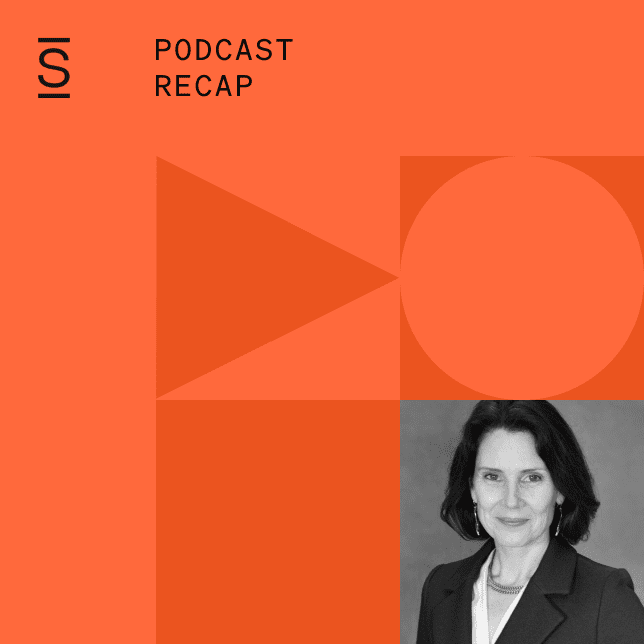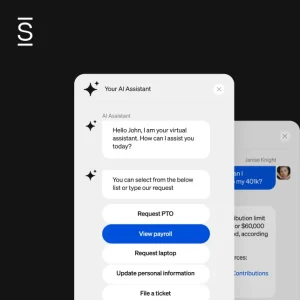Think humans are dispensable in the age of artificial intelligence (AI)? The opposite is true — we’ve never needed human intelligence in the workplace more to navigate organizational blind spots, communicate effectively, and lead with authenticity.
We covered these topics and more in the latest episode of the Cohesion podcast, featuring Monique Zytnik, an award-winning, global internal communication leader based in Berlin, Germany. Scroll down for highlights and listen to the podcast for the full story.
We begin with some lighthearted questions: her favorite candy is Haribo gummies, she’s reading German teen novels to enhance her language skills, and she’d love to know what happened to Amelia Earhart. Then, the conversation turns quickly to people, AI, authenticity, and why we need humans to manage humans more than ever.
Debunking communication myths
While many people can talk and write, effective and engaging communication requires specialized skills.
These aren’t skills that we can replicate with a platform, workflow, or robot.
AI can help clear a path — so to speak — but we have to walk down it. More specifically, people walk down the path. Monique has written a book about this specifically. “Internal Communication in the Age of Artificial Intelligence” offers simple models to improve communication in a rapidly changing technological landscape.
While AI can perform tasks like writing emails and translating languages, Monique reminds us that human oversight is essential. AI will be helpful, but it requires proper guidance to be effective.
Learn more: What you need to know about GenAI and employee efficiency
What we talk about when we talk about authenticity
This doesn’t necessarily mean that we’re more authentic. From Monique:
“If you are getting your knee operated on, do you want an authentic surgeon? You just want your surgeon to do a good job regardless of whether they’ve broken up with their spouse, had a bad day, or whatever’s happened. If you’re having your house painted, you don’t want someone to be authentic.”
You do want them to be human. You want them to be kind. Do we feel more comfortable when a surgeon shares a powerful story about a successful operation? What happens when we know our house painter cares about her reputation and work? This is where storytelling comes in. This is where humans still have an advantage over AI.
The power of storytelling
We need leaders. We need people who can listen, give guidance, and create real connections based on their experience. This is how we relate to one another. Can AI make up a story, pretend to be a human, and give us something to think about? Sure. Will it inspire us? Not likely. Will it build trust within a company? Nope.
Storytelling remains one of the most powerful ways to increase employee engagement and satisfaction.
If we want to build trust with others, we must share something about ourselves and allow them to respond. We have to listen. That’s how deep conversation and understanding happen. AI can’t do that.
Learn more: Unpacking employee experience to build trust in the workplace
Uncovering blind spots
Communication isn’t just about talking; it’s about listening. When we don’t try to understand each other in an organization, we create blind spots. These parts of your organization could be disengaged, unhappy, or actively undermining what you’re trying to do. More often than not, these situations catch leaders off-guard. They’re surprised when they discover them. As Monique explains:
“I don’t have a car anymore, but when I did, that little blind spot that you have when you’re trying to go around the corner, and you’ve always got to make sure you check it. It’s the same in an organization. There are always these little spots where you can’t see what’s going on very well. You need to take care of your employees on teams that aren’t reflecting your values … little fiefdoms happening with particular leaders who don’t wish to communicate, and they’re putting employees off, or people are leaving because of unfavorable working conditions.”
One-to-one human connection isn’t always easy. It takes time. It’s expensive. It’s hard work. Tools, robots and workflows only go so far. We must talk to people to know what’s happening within our business and how to inspire and motivate our employees. There’s no way around that.
Take a deeper dive into the impact of AI on employee experience
Want more?
Those are the basics, but Monique and I cover much more during our conversation, including:
- Training and virtual reality
- Using all of our senses to communicate: taste, touch, smell
- Digital taste (yes, it’s a thing)
- Asynchronous communication
- Quality vs quantity
- Deep fakes
- Case studies from global companies
- Executive communications
- The best Pastrami and Rye in New York
- Meaning and purpose outside of work
Subscribe to the Cohesion Podcast and listen to the full episode with Monique to learn more about communications, leadership and AI.














